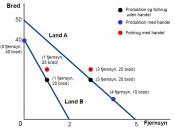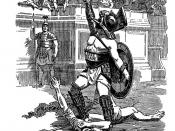Theme of Contents Table List Page Number Introduction 1-3 -Transport Trends in the CEEC and CIS - History and Current Status of European Transport Policy - Transport Problems - Chapter 1: Main Transport Trends and Impacts 4 -Current Transport Trends 4 - -Economic Activity 4 - Car Ownership 4 - Transport Infrastructure 4 - Passenger Transport 5 - Freight Transport 5 -Impacts of Transport 7 - - Direct Impacts On Economic Efficiency 8 Direct Impacts on The Environment and Health 8 Impacts on the Economy and Employment 11 Impacts on Regional Development 11 Indirect Impacts on Environment and Health 12 - Transport Forecasts 13 - - Person Transport 13 Freight Transport 13 Streams forecasts 13 - Transport Trends and Impacts in the CEEC and CIS 15 Chapter 2: History and Current Status of European 18 Transport Policy - European Transport Policy-Phase 1 to 1992 18 -European Transport Policy-Phase 2 19 - European Transport Policy Phase 3 21 Conclusion 24 Appendixes 25 Footnotes 34 Bibliography 38 Chapter 3: Arguments for and against 4-5 Protectionism Chapter 4:Methods of restricting trade 6-8 Chapter 5: Why do trade barriers exist? 9 Conclusion 10 Appendix 11-12 Bibliography 13 Introduction All economies, even large like that of the United States, depend to some extent on other economies and are affected by events outside their borders.
Therefore, the economic basis for trade is considered to be the comparative advantage, which is dating to the writings of David Ricardo in the nineteenth century, and holds that specialization and free trade will benefit all trading partners, even those that may be absolutely less efficient producers.
When trade is free, patterns of trade and trade flows result from the independent decisions of thousands of importers and exporters and millions of private households and firms. On the other hand, in the...


